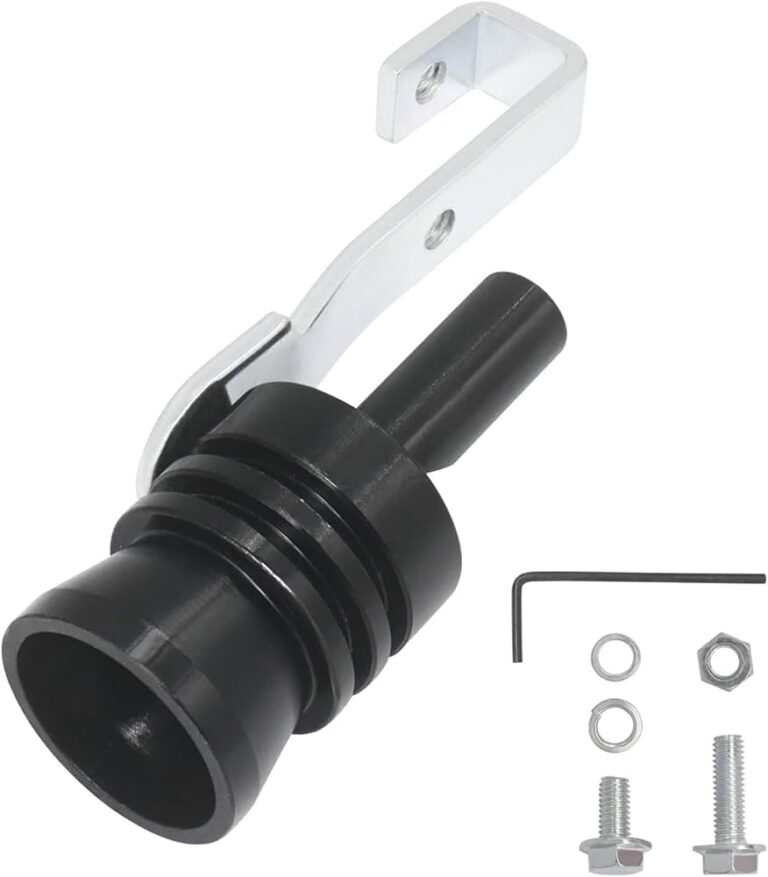What the Catalytic Converter Does : Boosting Performance and Protecting the Environment
The catalytic converter is responsible for reducing harmful emissions from a vehicle’s exhaust system. It converts toxic gases into less harmful substances through chemical reactions.
An essential component of a vehicle’s exhaust system is the catalytic converter. It plays a crucial role in reducing the levels of harmful emissions released into the atmosphere. By utilizing a combination of chemicals and high temperatures, the catalytic converter transforms toxic gases into less harmful substances, promoting cleaner air and reducing environmental pollution.
Its function is vital for meeting emissions regulations and ensuring the vehicle operates efficiently. Understanding the purpose and working principles of the catalytic converter is crucial for both vehicle owners and environmental enthusiasts alike. We will delve into the working mechanism, importance, and maintenance tips for catalytic converters.
Understanding Catalytic Converters
Understanding Catalytic Converters
Catalytic converters are an integral part of modern vehicles, serving a crucial role in reducing harmful emissions. Initially developed in the 1950s, these devices have undergone significant advancements over the years.
| Year | Advancements |
|---|---|
| 1950s | The first catalytic converter was invented, using platinum as a catalyst. |
| 1970s | Regulations were enforced, resulting in the widespread use of catalytic converters in automobiles. |
| 1980s | Introduction of more efficient and durable converters with improved catalyst technology. |
| 1990s | The use of advanced catalysts, including palladium and rhodium, further enhanced performance. |
| 2000s | Development of advanced catalyst coatings, optimizing conversion efficiency. |
Designed to convert toxic gases from the exhaust into less harmful substances, catalytic converters utilize a combination of chemical reactions and catalysts. By converting pollutants such as carbon monoxide, nitrogen oxides, and hydrocarbons into carbon dioxide, nitrogen, and water vapor, catalytic converters play a critical role in reducing air pollution and achieving cleaner emissions.
Overall, the history and development of catalytic converters showcase the continuous efforts made by the automotive industry to promote environmental sustainability and ensure cleaner air for future generations.
How Catalytic Converters Work
A catalytic converter is an important component in a vehicle’s exhaust system. Its main function is to reduce harmful emissions from the engine by converting them into less harmful substances before they are released into the atmosphere. The converter uses a series of chemical reactions to achieve this.
Inside the catalytic converter, there are precious metals such as platinum, palladium, and rhodium. These metals act as catalysts, speeding up the chemical reactions that occur. When the exhaust gases flow through the converter, a reduction reaction takes place, converting nitrogen oxides into nitrogen and oxygen, which are harmless. At the same time, an oxidation reaction occurs, converting unburned hydrocarbons and carbon monoxide into carbon dioxide and water vapor.
The platinum group metals in the converter are crucial for its effective functioning. They help facilitate the reactions and are able to withstand the high temperatures generated by the exhaust gases. Without these precious metals, the converter would not be able to efficiently reduce emissions and meet environmental regulations.
Boosting Performance Of Catalytic Converters
Boosting Performance of Catalytic Converters
Catalytic converters play a crucial role in improving the overall performance of an engine. By reducing harmful emissions, catalytic converters contribute to a cleaner environment, while also enhancing engine efficiency.
One of the significant impacts of catalytic converters is on the horsepower and torque of a vehicle. While they are primarily designed to control emissions, they can also have an effect on the engine’s power output.
The catalytic converter functions as a passive exhaust system component, leading to some degree of restriction in the exhaust flow. This can result in a slight reduction in engine power. However, advancements in technology have allowed for the development of high-flow catalytic converters that mitigate this restriction, minimizing the impact on performance. These high-flow converters optimize exhaust gas flow, maintaining or even improving horsepower and torque.
To further enhance performance, aftermarket catalytic converters are available that are designed specifically for increased flow and reduced restriction. These performance-oriented converters are commonly used in high-performance vehicles, offering better exhaust gas flow and, consequently, increased power.
It’s important to note that the impact of catalytic converters on performance may vary depending on several factors, such as the engine’s design, overall vehicle setup, and the specific catalytic converter being used. However, modern catalytic converter technology ensures that the potential compromise on performance is minimal, allowing for both environmental responsibility and engine efficiency.
Protecting The Environment With Catalytic Converters
The use of catalytic converters in vehicles plays a crucial role in reducing air pollution and protecting the environment. These devices are specifically designed to minimize the harmful emissions that are released from vehicle exhausts.
Catalytic converters consist of a honeycomb-like structure, usually made of platinum, palladium, and rhodium, which acts as a catalyst. When the exhaust gases pass through the catalytic converter, the catalyst facilitates chemical reactions that convert the harmful pollutants into less harmful substances. Carbon monoxide, nitrogen oxide, and unburned hydrocarbons are examples of pollutants that are converted into less harmful carbon dioxide, nitrogen, and water vapor.
By effectively reducing emissions, catalytic converters contribute significantly to improving air quality and reducing the negative impact of vehicle exhausts on both human health and the environment. Proper maintenance of catalytic converters, including regular inspections and prompt replacement when necessary, is essential to ensure their optimal performance and continued effectiveness in reducing air pollution.
Types Of Catalytic Converters
A catalytic converter is an essential part of a vehicle’s emissions control system. It helps convert harmful pollutants into less harmful substances before they are emitted into the atmosphere. There are different types of catalytic converters, including:
| Three-way catalytic converters | Diesel oxidation catalysts | Selective catalytic reduction systems |
|---|---|---|
| Three-way catalytic converters are commonly found in gasoline-powered vehicles. They have two main functions: reducing nitrogen oxides (NOx) into harmless nitrogen and oxygen, and converting carbon monoxide (CO) and unburned hydrocarbons into carbon dioxide (CO2) and water. | Diesel oxidation catalysts are designed specifically for diesel engines. They help convert harmful pollutants such as carbon monoxide (CO) and unburned hydrocarbons (HC) into less harmful substances, like carbon dioxide (CO2) and water. | Selective catalytic reduction systems are used in diesel engines to reduce nitrogen oxides (NOx) emissions. They work by injecting a urea-based solution called diesel exhaust fluid (DEF) into the exhaust stream, which reacts with the nitrogen oxides to form harmless nitrogen and water vapor. |
Each type of catalytic converter has its own unique characteristics and plays a crucial role in reducing vehicle emissions. Understanding these different types can help vehicle owners and technicians make informed decisions regarding emissions control systems.
Catalytic Converter Maintenance
htmlSigns Of A Failing Catalytic Converter
Regular maintenance and inspection of catalytic converters is essential to ensure optimal vehicle performance and reduce harmful emissions. A catalytic converter plays a vital role in reducing the toxic pollutants emitted from the exhaust system.
One of the common signs of a failing catalytic converter is a decrease in engine performance. If you notice a significant reduction in acceleration or power, it could indicate a malfunctioning converter. Another sign to watch out for is an increase in fuel consumption. A failing converter may result in poor fuel efficiency, costing you more in fuel expenses.
Additionally, a failing catalytic converter may trigger the check engine light on your dashboard. In this case, it is crucial to have your vehicle inspected by a professional mechanic to determine the exact issue. Strange smells, such as a sulfur-like odor, or loud metallic noises coming from the exhaust system can also indicate a problem with the catalytic converter.
To prolong the lifespan of your catalytic converter, it is important to practice preventive maintenance. Regularly scheduled maintenance includes inspecting the converter for any physical damage or clogs, ensuring the fuel and ignition systems are functioning properly, and replacing faulty oxygen sensors. Following the manufacturer’s guidelines and using high-quality fuel can also contribute to the longevity of the catalytic converter.
By taking proper care of your catalytic converter, you can not only extend its lifespan but also contribute to a cleaner and healthier environment.
The Future Of Catalytic Converters
htmlCatalytic converters play a crucial role in reducing harmful emissions from vehicles. As vehicle emissions regulations become increasingly stringent, there is a growing need for advanced catalytic converter technology.
One major advancement in catalytic converter technology is the use of advanced catalyst materials such as platinum, palladium, and rhodium. These materials are highly effective at facilitating the catalytic reactions that convert harmful pollutants into less harmful substances.
Additionally, new designs and structures are being developed to increase the surface area of the catalyst, allowing for more efficient conversion of harmful emissions. This includes the use of honeycomb structures and nano-scale catalyst particles.
Furthermore, advanced exhaust gas sensors are being integrated into catalytic converters to enable real-time monitoring of exhaust gas composition. This allows for more precise control of the catalytic processes and improves overall effectiveness.
In the quest for alternative solutions, researchers are exploring alternative fuels and hybrid technologies as potential ways to reduce emissions further. These alternatives aim to reduce the load on catalytic converters by using cleaner fuels or a combination of combustion engines and electric motors.
In conclusion, the future of catalytic converters lies in continuing advancements in technology. The use of advanced catalyst materials, new designs and structures, advanced exhaust gas sensors, and exploration of alternative fuels and hybrid technologies will pave the way for more efficient and effective emission reduction.
.jpg)
Credit: www.quality-tuning.eu
Frequently Asked Questions On What The Catalytic Converter Does
Can A Car Run Without A Catalytic Converter?
Yes, a car can run without a catalytic converter. However, it is illegal in many countries due to increased pollution emissions.
What Are Symptoms Of A Bad Catalytic Converter?
Common symptoms of a bad catalytic converter include decreased engine performance, reduced fuel efficiency, unusual exhaust smells, and the illumination of the check engine light.
Does Removing Catalytic Converter Damage Engine?
Removing the catalytic converter can potentially damage the engine.
Can You Drive With A Bad Catalytic Converter?
Yes, you can drive with a bad catalytic converter, but it’s not recommended. A faulty catalytic converter can cause decreased fuel efficiency, rough engine performance, and issues with vehicle emissions. It’s best to replace it to avoid potential further damage to your vehicle.
Conclusion
Overall, the catalytic converter is an essential component of your vehicle’s exhaust system. With its ability to convert harmful pollutants into less harmful emissions, it plays a crucial role in reducing air pollution and ensuring compliance with environmental regulations. Regular maintenance and inspections are necessary to keep the catalytic converter functioning properly.
By understanding its purpose and importance, we can all contribute to a cleaner and healthier environment for generations to come.








